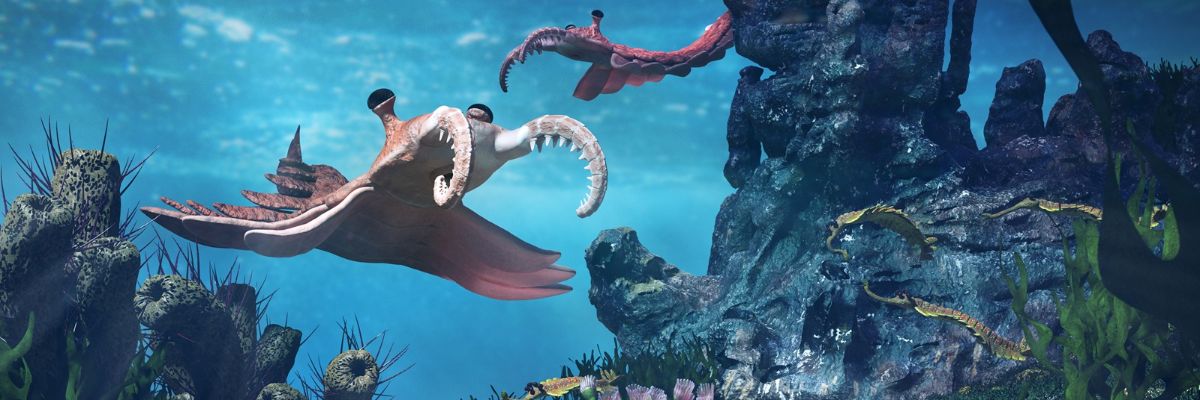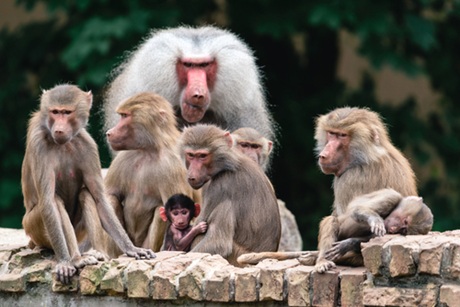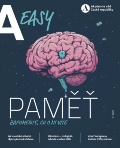
Rewrite the textbooks – we’ve found a bone; aka When science takes a wild turn
06. 10. 2025
Science doesn’t always have to mean endless tinkering in the lab. Sometimes it’s a rollercoaster full of twists and loops – like when an ancient fossil turns up, there’s a new breakthrough in technology, or someone simply takes a fresh look at an old problem. We picked out a few recent (re)discoveries to showcase in the A / Easy magazine, published by the Czech Academy of Sciences.
PREHISTORIC TETRIS
For paleontologists, surprises are part of the job. Often, they don’t even know at first what kind of treasure they’ve stumbled upon, and their ideas about what prehistoric creatures looked like can shift with every new find. “A good example is Anomalocaris. Its fragmented fossilized body parts were originally described as completely different animal fossils – the mouth was thought to be a jellyfish, the appendages a bizarre shrimp’s tail, and the body a sea cucumber,” says Lukáš Laibl from the Institute of Geology of the Czech Academy of Sciences (CAS). Today, we know it was one of the earliest apex predators.
Another creature that has given scientists plenty of headaches is Spinosaurus, which lived some 400 million years later. Do you still picture it as a land-dwelling dinosaur, kind of like a T. rex with a sail on its back? Because that’s exactly how it appeared in the 2001 film Jurassic Park III. But two decades on, we’re actually looking at a gigantic semi-aquatic dinosaur with a flat tail and powerful forelimbs. “Recent discoveries in North Africa really point in that direction. Back then, the region was a coastal area where large rivers flowed into the sea. Spinosaurus most likely spent a good part of its life in the water,” the Czech paleontologist notes.
|
PALEONTOLOGICAL SOMERSAULTS
|

COSMIC KINDER EGGS
Astronomy, too, is full of scientific leaps. Take asteroids. Do you imagine them as giant round boulders hurtling through space? Then forget it. New findings show asteroids come in all shapes – from elongated cones to jagged fragments. And what’s more – the old theory that asteroids mainly consist of solid rock or metal is also out the window. They’re often more like piles of dust and ice. “They’re surprisingly fragile objects, sometimes held together only by weak gravity,” says Petr Pravec from the Astronomical Institute of the CAS.
Millions of such stellar objects orbit the Sun in the main asteroid belt between Mars and Jupiter, and the smaller ones – about a meter across – come into contact with Earth fairly often, roughly once a month. “Most of them, though, burn up in the atmosphere,” the Czech researcher reassures us. For scientists, asteroids are not only troves of information about the early stages of our planetary system, but in the future could also be a potential source of vital raw materials – which may one day be mined directly in space.
|
ASTRONOMICAL CURIOSITIES
|

SNIP – AND THE DISEASE IS GONE
Among the diseases that may one day be more easily treatable are certain developmental disorders such as cystic fibrosis. A breakthrough method leading the way is called CRISPR-Cas9, which uses molecular “scissors” to cut out the damaged part of DNA and replace it. And here’s the real kicker – some diseases could even be eradicated this way entirely. That’s because the changes induced by CRISPR-Cas9 in one individual are written directly into their genes and can be passed on to their offspring – and on to future generations.
The mechanism behind these molecular scissors isn’t a human invention – it’s a wholly natural process, perfected in organisms by evolution over millions of years, which scientists have simply “domesticated.” This revolution in genetic engineering even garnered a Nobel Prize five years ago. But figuring out the complete human genome, so the scissors could always cut in the right spot, was no walk in the park. The full readout wasn’t achieved until 2022. No wonder – it consists of three billion base pairs, whose sequence and combinations encode the unique genetic information of every organism.
|
GENETICS UP CLOSE
|
THE AMAZON GIVING UP ITS SECRETS
The Amazon rainforest – 5.5 million square kilometers of pristine wilderness… Or is it? Beneath the dense vegetation of what is now Ecuador, aerial archaeology and new technologies such as LiDAR (laser 3D terrain mapping) have uncovered the remains of an ancient megacity inhabited some 2,500 years ago by a civilization similar to the Maya. Where it once seemed there was nothing but untouched nature, sprawling towns and villages linked together existed. And not only that – these ancient inhabitants also appear to have shaped artificial mounds and hills. Researchers believe this is just the tip of the iceberg and are continuing to examine the areas.
Elsewhere, LiDAR has already revealed hidden pyramids, burial mounds, embankments, and other monumental structures, rewriting the history of the continent. It seems the Indigenous peoples of South America were far more skilled builders and urban planners than Western society used to think.
LiDAR (Light Detection and Ranging) works by firing rapid laser pulses that bounce off the ground and return to the sensor. The distance between these points is then measured to create a digital model of the terrain, in which traces of human activity usually clearly stand out. In the Czech Republic, aerial archaeology has revealed the remains of numerous vanished medieval villages and castles, long lost on the surface.
|
THINKING ABOUT SOMERSAULTS What impact does science have on people and our society, and how does it work in the “real” world? How is our everyday life shaped by artificial intelligence or genetic engineering, for instance? And what ethical questions does all this raise? These are the kinds of issues tackled by the Center for Science, Technology, and Society Studies at the Institute of Philosophy of the CAS. “Evaluating science is complicated, let alone defining something like a ‘scientific somersault,’ a reversal of theory. What looks like an abrupt shift from a distance may not be, up close,” says philosopher Jan Maršálek. His colleague Radim Hladík adds, “Every scientific endeavor is, in its own way, trying to be revolutionary – at least within its narrow thematic field.” |

THE ALPHA MALE MYTH
“I’m the boss around here!” For a long time, it was believed that primate troops were governed by a clear hierarchy, with an alpha male at the top whose word was “law.” But once women scientists entered primatology, this picture collapsed. Researchers began paying closer attention to how apes behaved in the wild – and what the female members of the troops were doing. They discovered that female apes play a key role in troop society: raising young, maintaining family bonds, resolving conflicts. In other words, it’s not brute strength or size that determines who’s in charge. American biologist Donna Haraway pointed out already in the 1970s how this shift in perspective revealed that even science reflects the cultural context of its time.
|
SCIENTIFIC REVOLUTIONARIES ACROSS TIME – AND WHAT THEY MIGHT HAVE SAID… 16th century 17th century 17th century 18th century 19th century 20th century |
*
This article was first published in the 1/2025 Czech issue of A / Easy:

1/2025 (version for browsing)
1/2025 (version for download)
*
A / Easy is published (in Czech) by the Czech Academy of Sciences. Print copies are sent free of charge to anyone interested. Contact us at predplatne@ssc.cas.cz.
Written by: Jana Bečvářová, External Relations Division, CAO of the CAS
Translated and prepared by: Tereza Novická, External Relations Division, CAO of the CAS
Photo: Shutterstock
 The text is released for use under a Creative Commons license.
The text is released for use under a Creative Commons license.
Read also
- Two ERC Synergy Grants awarded to the Czech Academy of Sciences
- Nine CAS researchers received the 2025 Praemium Academiae and Lumina Quaeruntur
- Step inside the world of research: Week of the Czech Academy of Sciences 2025
- A / Magazine: Bugs, the rusting human body, and beauties from the kingdom of ice
- PHOTO STORY: The invasive black bullhead catfish threatens Czech fishponds
- CAS researchers receive L’Oréal-UNESCO Award and Forbes recognition
- Young scientists discussed economic challenges with Nobel laureates in Lindau
- A cure for cancer? Fighting the climate crisis? Ask the data scientists
- Vice-Presidents of the CAS set priorities for 2025–2029 term
- Public Hearing: “Making Sense of Open Science”
The Czech Academy of Sciences (the CAS)
The mission of the CAS
The primary mission of the CAS is to conduct research in a broad spectrum of natural, technical and social sciences as well as humanities. This research aims to advance progress of scientific knowledge at the international level, considering, however, the specific needs of the Czech society and the national culture.
President of the CAS
Prof. Eva Zažímalová has started her second term of office in May 2021. She is a respected scientist, and a Professor of Plant Anatomy and Physiology.
She is also a part of GCSA of the EU.